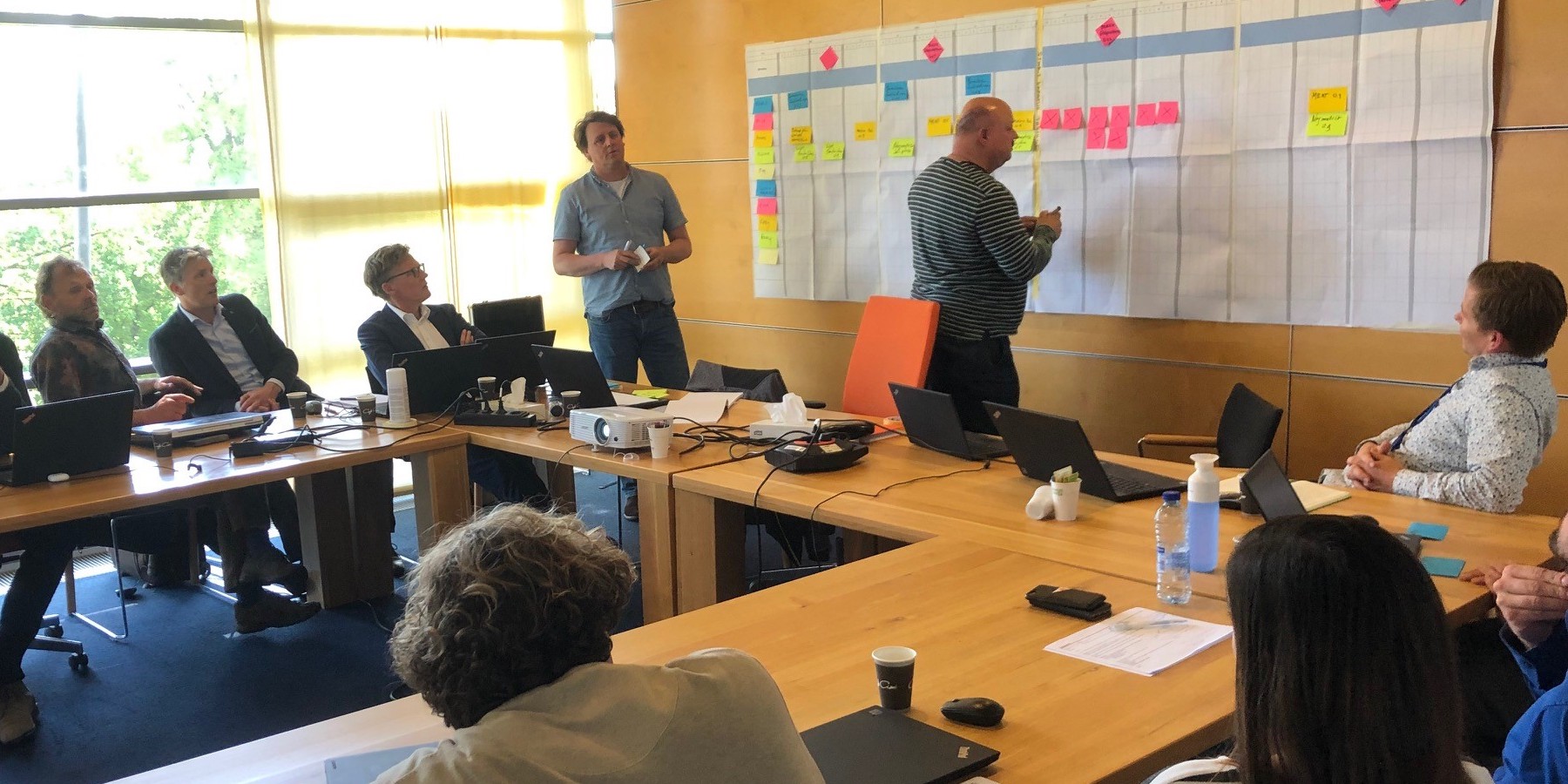
Breaking the silence
FEATURE – By changing its attitude towards problems and welcoming them as opportunities to learn, this Colombian construction company has turned around its culture.
Words: Ángela Bayona and Ivonne Paola Patiño
In Constructora Bolívar, silence is our worst enemy. Although certain types of silence are good, others are worrisome – especially those that stem from people’s reluctance to discuss problems.
As human beings, we tend to think of problems as something we don’t want, something we need to hide. Whenever a person in our organization says, “Best to give this problem a quick fix right away, so the boss doesn’t find out”, what we are really hearing is fear of the consequences of raising a problem, of being blamed for it, and so on.
As such, we want to focus on the emotions that problems create in people within our organization. Despair, worry, fear, panic, unease, sadness, uncertainty, stress… these are only some of the words people might use to describe how problems make them feel, and the worst part is that such emotions are often caused by leaders.

How many of you have had a boss who told you: “You are paid to bring me solutions, not problems”? In traditional management thinking, the person who identifies an issue is considered “conflictive”, “problematic” or “difficult”. To leaders who think like that, it is much better to have someone creatively solve the problem right away, so we can go back to work.
We had this exact situation at Constructora Bolívar. Before our lean transformation, people described problems as “a situation that got out of control”, “something that prevented us from reaching our goals”, “something that prevented us from doing our job”, or “something that blocked me and frustrated me”. Sure, problems hinder our performance and may slow us down in achieving our goals, but if we see them like that, we can’t be surprised if people will want to hide them.
Our challenge was that we didn’t have a clear idea of what a problem was and, as a result, we treated all problems in the same way. That was, until we decided to welcome problems rather than fear them (like Taiichi Ohno said, problems are treasures). Our lean transformation began at that moment. It was around two years ago.
Our journey can be divided into three phases: conceptualization, adoption, and diffusion (although, really, we see it more as a cycle than as a linear progression).
CONCEPTUALIZATION
This is where we laid down the groundwork, as we strived to unequivocally define a problem as a gap between where we are and where we want to be, based on a clear standard.
To realize that not all problems are the same was eye-opening for us. Indeed, the introduction of Art Smalley’s Four Types of Problems framework was a turning point, which transformed our company’s culture forever. It helped us to distinguish between caused problems that we tackle every day to allow value to flow (type 1 and 2) and created problems that enable continuous improvement and innovation (type 3 and 4).
We live in the culture of “here and now”, where problems are expected to be solved right away. Our antidote to that was the A3, which forces us to take the time to analyze the problem in depth and identify its root cause to prevent it from occurring again.
The training sessions we organized allowed us to bring this fundamental knowledge to all our people across Colombia, something we followed up on by encouraging them to put those lessons into practice at the gemba. This is what ultimately transformed their definition of a problem. These days, our people consider problems as “a gap”, “a situation that is not as it should be”, “the difference between where we are now and where we want to be”, or “an opportunity to find different ways of working”.
ADOPTION
After we developed the problem-solving capabilities of our staff, we moved to the following phase – Adoption. We started by going to gemba to observe and ask questions. We investigated the work, engaging with value creators to learn what their problems were. At that point, waste became visible as a source of problems – a connection we had never seen before (we thought waste was just part of the work).
This is when we made one of the greatest discoveries in our lean journey to date: data trumps opinion every time. These days, we speak exact figures and percentages, not estimates (“a bit too high” or “smaller than we thought”), and when we can’t, it is clear to us that the standard is not there or not clear enough. Coupled with the introduction of standard work and result tracking, this made a huge difference.
As people developed an understanding of what constitutes a problem, A3s started to pop up all around the country, focusing on all kinds of problems, from waiting times to waste of materials. We have also run “problemathones”, problem-solving marathons, during which we engage the staff of a construction site as well as other areas involved in the process. This is how we started to connect the dots and develop an end-to-end view of our work.
DIFFUSION
Problem solving and the knowledge it generates belong to everyone. There is no value in having one person or one team make an improvement for and by themselves. After we started to share everything that we learned about problems, we have seen an acceleration in the pace of change and improvement across the organization. We are proud to have tackled over 70 problems using the A3 methodology, involving more than 14 areas and over 600 people. From a financial standpoint, problem solving has saved us a staggering 1,500,000,000 pesos (USD$320,000).
FINAL COMMENTS
We feel like we have learned a lot about ourselves and about what it takes to bring about lean change in an organization. Therefore, we’d like to share some final thoughts that will hopefully help you in your own reflection.
1. Moving the organizational culture towards transparency about problems leads to better process flow. The easier it is to identify problems, the more problems we can address, with positive results on productivity and efficiency.
2. Treating problems in a structured way and identifying their root cause leads to effective solutions that enable continuous improvement and streamline innovation.
3. Once a problem is solved, it is fundamental to socialize the lessons learned and standardize them, to ensure the problem doesn’t reoccur elsewhere in the company. This is key to ensure the sustainability of any change initiative.
As we look back at the past couple of years, we realize that none of this would have been possible if Constructora Bolívar hadn’t decided to “break the silence”. Indeed, change can only happen when we talk openly about problems.
THE AUTHORS


Read more


FEATURE – Using the Japanese tradition of daruma dolls as an example, the author explains how to turn continuous improvement into concrete challenges – and, from that, real competitive advantage.


FEATURE – A Dutch transmission system operator is using Lean Planning – built around the Last Planner System – to better manage its complex infrastructure projects.


INTERVIEW – Atlantis Foundries was able to achieve zero defects for three months in a row thanks to machine learning. Here’s why the human component can’t be discounted.


THE NAKED GEMBA – Our new series goes back to basics to unlock the secrets of the gemba and tell us about some of the main tools and techniques we can use in a lean transformation. First up, supermarkets.

